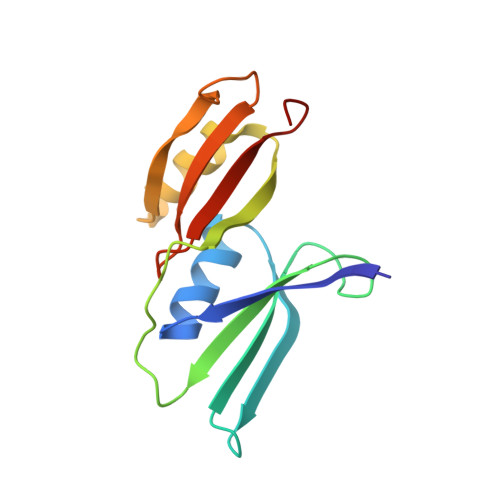The crystal structure of a homodimeric Pseudomonas glyoxalase I enzyme reveals asymmetric metallation commensurate with half-of-sites activity.
Bythell-Douglas, R., Suttisansanee, U., Flematti, G.R., Challenor, M., Lee, M., Panjikar, S., Honek, J.F., Bond, C.S.(2015) Chemistry 21: 541-544
- PubMed: 25411134
- DOI: https://doi.org/10.1002/chem.201405402
- Primary Citation of Related Structures:
4MTQ, 4MTR, 4MTS, 4MTT - PubMed Abstract:
The Zn inactive class of glyoxalase I (Glo1) metalloenzymes are typically homodimeric with two metal-dependent active sites. While the two active sites share identical amino acid composition, this class of enzyme is optimally active with only one metal per homodimer. We have determined the X-ray crystal structure of GloA2, a Zn inactive Glo1 enzyme from Pseudomonas aeruginosa. The presented structures exhibit an unprecedented metal-binding arrangement consistent with half-of-sites activity: one active site contains a single activating Ni(2+) ion, whereas the other contains two inactivating Zn(2+) ions. Enzymological experiments prompted by the binuclear Zn(2+) site identified a novel catalytic property of GloA2. The enzyme can function as a Zn(2+) /Co(2+) -dependent hydrolase, in addition to its previously determined glyoxalase I activity. The presented findings demonstrate that GloA2 can accommodate two distinct metal-binding arrangements simultaneously, each of which catalyzes a different reaction.
- School of Chemistry and Biochemistry, The University of Western Australia, 35 Stirling Highway, Crawley 6009, Western Australia (Australia).
Organizational Affiliation:



















